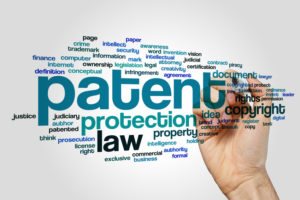Have you asked the question, “is my idea patentable?”, or, “which technologies are best for patenting?” This post provides inventors with a brief overview of protecting inventions through patents.
A design patent can protect ornamental designs and a utility patent can protect useful, novel, and non-obvious inventions through utility patents. Speaking generally, design patents protect ornamental features of an article or user interface while utility patents protect useful or functional features of a process, machine, article of manufacture or composition of matter. The best candidate ornamental designs for protection through design patents include ornamental features that are highly valuable, likely to be infringed and difficult to design around. Similarly, the best candidate inventions for protection through utility patents include functional features that are easy to detect, difficult to design around, likely to be infringed and have value in exclusivity. In other words, the value of a utility patent may matter less about applicable technology sectors and more about implementation of specific features in the market. Factors affecting the value of a utility patent are explored below in more detail. These factors should be considered before pursuing patent protection.
Ease of Detection: Product or process features that are easy to detect are often excellent candidates for patenting. For example, some valuable features of a product (e.g., consumer electronics product, etc.) can be easily discovered by merely purchasing and reverse engineering the product. Product or process features that are less detectable may be lesser candidates for patenting, but can still be patented. Features in the following examples may be difficult to detect without extensive discovery or expensive reverse engineering:
- A complex manufacturing process
- A detailed algorithm
- A recipe
While patentable, product or process features that are difficult to discover by a third party might be best kept as a trade secret. The Coca Cola® formula, for example, is one of the world’s most valuable and famous trade secrets. Stated another way, product or process features that are difficult to detect (in terms of proving patent infringement) may not be suitable for patenting. For instance, some features of a process to manufacture a micro-sized semiconductor device may be easily discovered through inspection or reverse engineering the device while other features of the process may be very difficult to discover. If you will be unable to prove that your competitor is practicing features for which patent protection is available, you may instead consider keeping these features proprietary as a trade secret.

Difficult to Design Around:
Generally, the more fundamental features are to a product or process, the more likely these features are good candidates for patent protection. Product or process features that your competitors will need to implement may be particularly valuable candidates for patent protection. For example, being able to exclude your competitor from implementing features directed to a standard approach to solving a problem or basic technology building blocks may be particularly valuable for your business. If it would be difficult for your competitor(s) to design around a patent (e.g., a redesign would be expensive or introduce disadvantages), then pursuing such a patent may enable you to block your competitor(s). So-called “bridge” or “gating” technology features that must be crossed or “adopted” in order to compete with you are typically great candidates for patenting. Additionally, obtaining multiple patents surrounding your building block features may provide a “thicket” that impedes your competitor(s). In other words, you may want to patent more than just fundamental building blocks or core design features. For example, you may also want to obtain patents to cover the most common features and implementations that may arise out of a product or process.
…….To be continued in Part II
